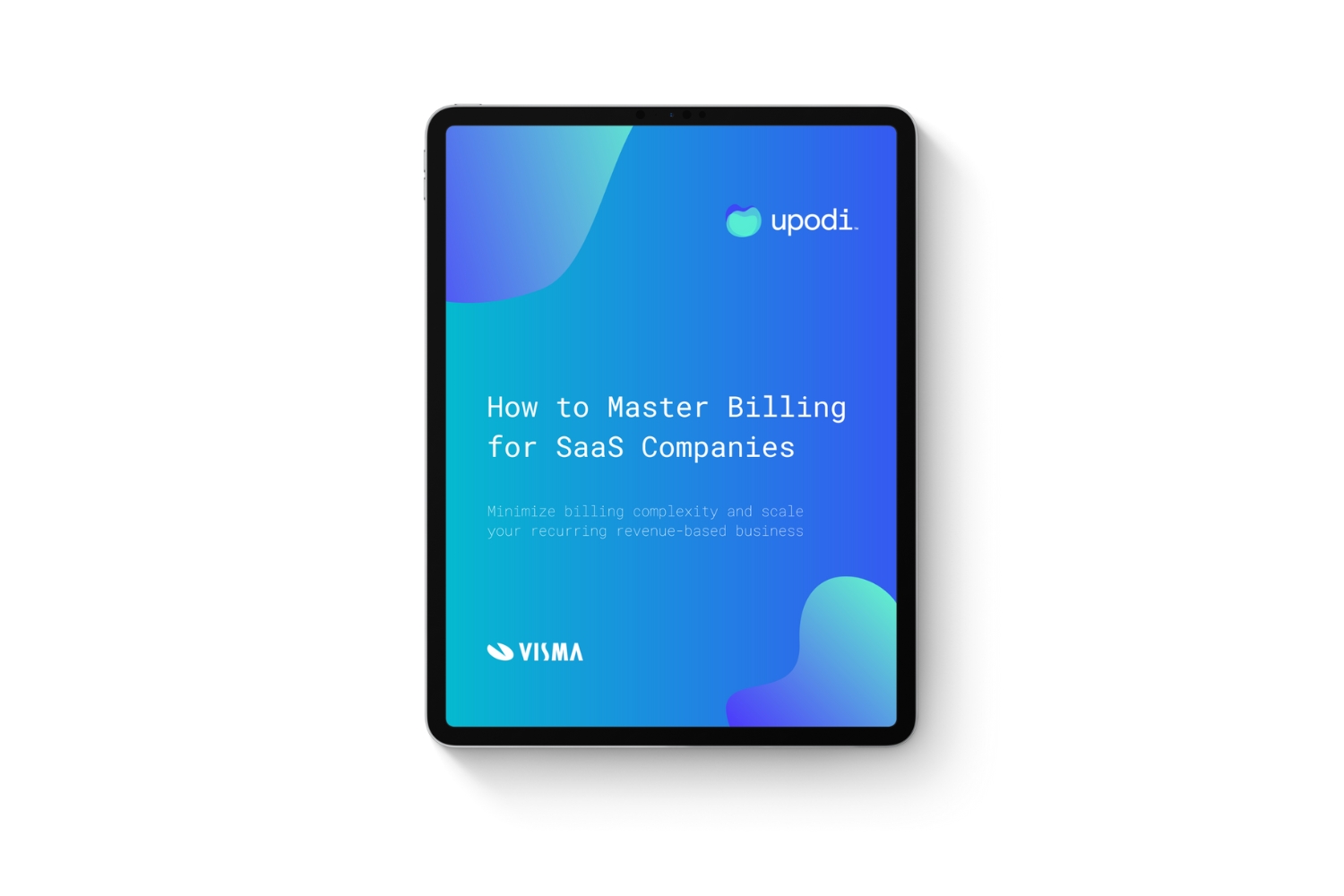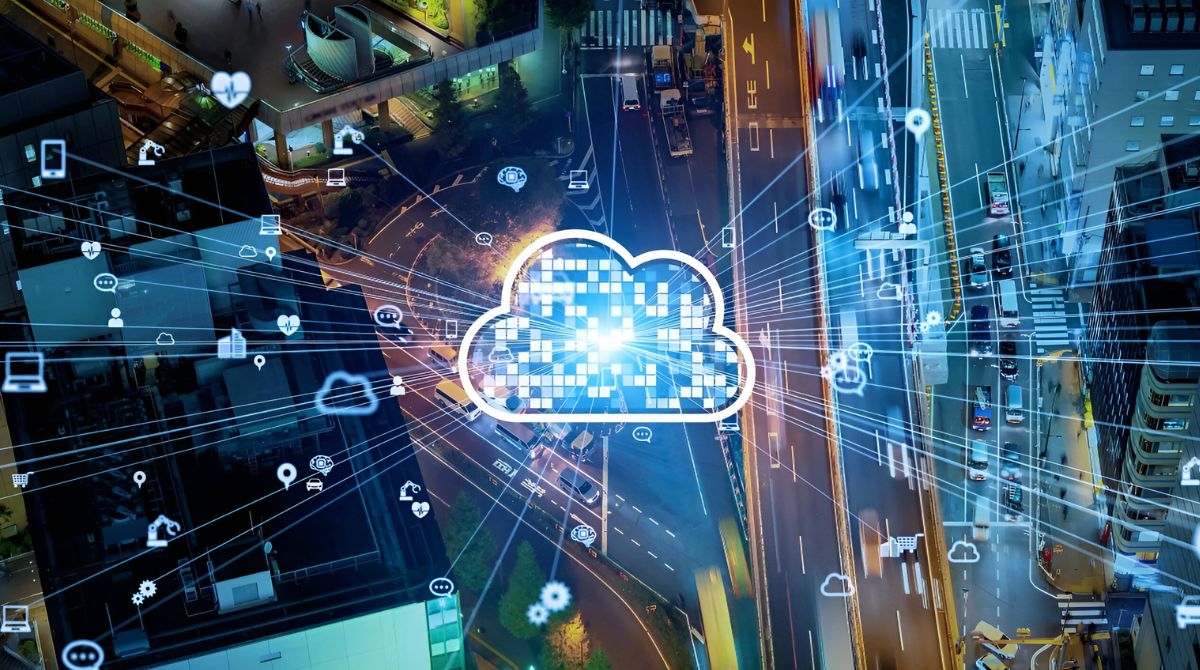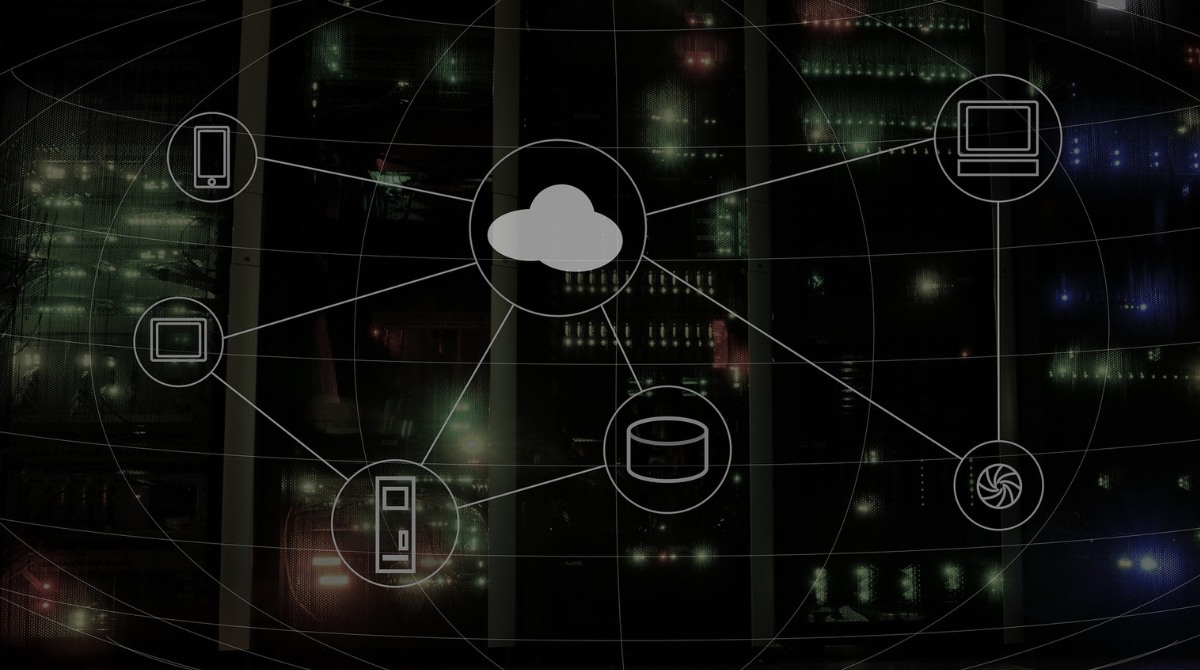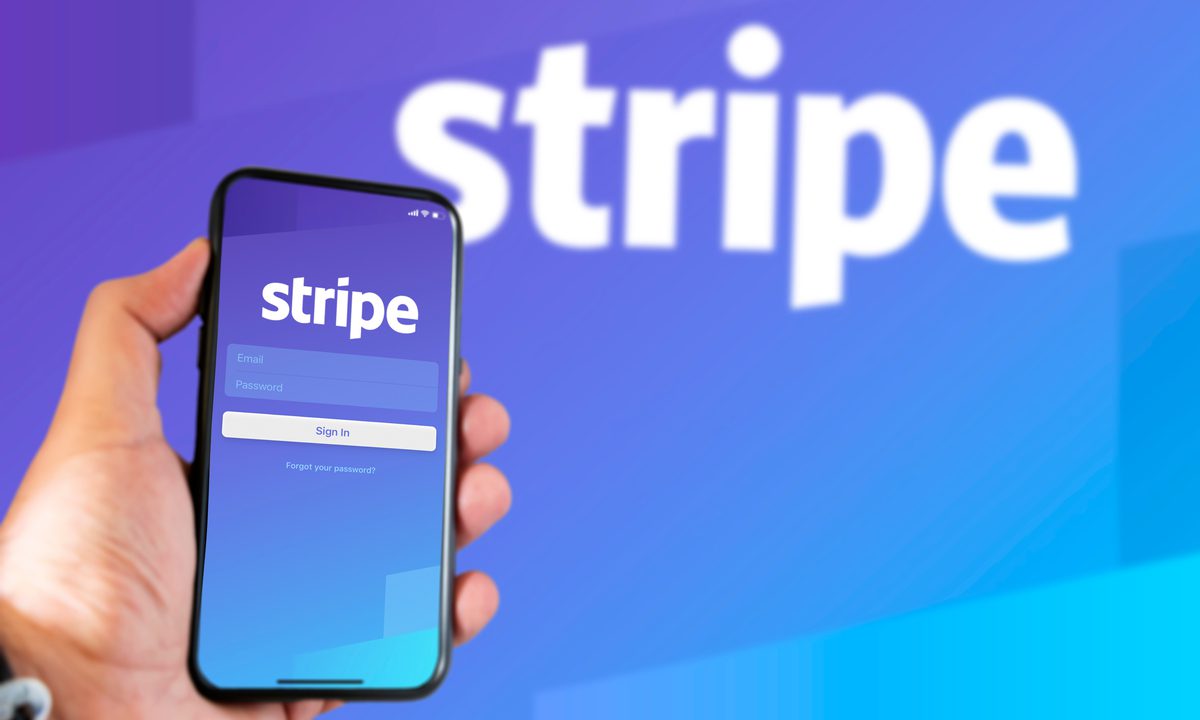Introduction
Welcome to the world of SaaS billing! As technology continues to evolve, businesses are increasingly turning to software-as-a-service (SaaS) solutions to streamline their operations. SaaS billing, an integral part of SaaS platforms, plays a crucial role in managing customer subscriptions and handling payments. In this article, we will explore what SaaS billing is, how it works, its benefits, common billing models, key features of billing systems, considerations for choosing a provider, and the challenges involved in implementing SaaS billing.
SaaS billing refers to the process of invoicing and collecting payments for SaaS products or services. It encompasses various activities, such as setting up pricing plans, managing recurring payments, handling upgrades and downgrades, issuing invoices, and tracking customer usage and billing history. A reliable SaaS billing system simplifies the complex task of managing subscriptions, ensuring accurate and timely revenue recognition for businesses.
The driving force behind the adoption of SaaS billing is its ability to provide businesses with a scalable and flexible billing infrastructure. Traditional billing methods, such as manual invoicing or legacy systems, often fall short in handling the complexities of subscription-based businesses. SaaS billing systems, on the other hand, are designed to meet the unique needs of subscription businesses, offering features like automated recurring billing, proration, trial periods, and customizable pricing plans.
By leveraging SaaS billing, businesses can achieve greater efficiency and accuracy in their billing processes. Automation reduces the risk of human error and eliminates tedious manual tasks, allowing businesses to focus on delivering value to their customers. Additionally, SaaS billing systems provide real-time visibility into customer data, enabling businesses to make data-driven decisions and optimize their pricing strategies.
As SaaS business models continue to evolve, the importance of choosing the right billing solution cannot be overstated. The next sections of this article will delve deeper into the specifics of SaaS billing, including its fundamental workings, benefits, commonly used billing models, key features to look for in a billing system, and the challenges and considerations involved in implementing and selecting a SaaS billing provider. So, let’s dive in!
Definition of SaaS Billing
SaaS billing, short for Software-as-a-Service billing, refers to the process of managing and automating the invoicing and payment collection for SaaS products or services. In simple terms, it is the mechanism by which SaaS companies charge their customers for the usage of their software applications or services.
At its core, SaaS billing involves setting up and managing subscription plans that dictate how customers are billed, determining the pricing structure, and handling recurring payments. The billing process typically includes tasks such as creating and sending invoices, tracking customer usage, managing upgrades and downgrades, and handling cancellations or refunds.
One of the defining characteristics of SaaS billing is its recurring nature. Unlike one-time purchases, where customers make a single payment for a product, SaaS billing is based on a subscription model. Customers are billed periodically, usually monthly or annually, based on their subscription plan and usage. This recurring revenue model allows SaaS companies to establish predictable and sustainable revenue streams.
SaaS billing systems provide the infrastructure and tools necessary to manage the complexities of recurring billing. They integrate with the SaaS application or platform to track customer usage, calculate charges based on predefined pricing plans, generate invoices, and facilitate secure payment processing. These systems ensure accurate and efficient billing, reduce human error, and enable seamless subscription management.
Another important aspect of SaaS billing is its ability to handle various billing scenarios and pricing structures. SaaS companies often offer different pricing tiers or plans, tailored to meet the needs of different customer segments. These plans may include features like usage-based pricing, tiered pricing, or one-time fees for additional services or upgrades. SaaS billing systems allow businesses to easily define and manage these pricing structures and automatically apply them to customer invoices.
Overall, SaaS billing is an essential component of any SaaS business. It enables companies to effectively monetize their software or services, manage customer subscriptions, and ensure timely and accurate revenue recognition. By automating the billing process and providing flexibility in pricing and plans, SaaS billing systems empower businesses to focus on delivering value to their customers while maintaining a sustainable revenue model.
How SaaS Billing Works
SaaS billing operates on a subscription-based model, where customers pay a recurring fee for access to the software or services provided by a SaaS company. The billing process involves several key steps that enable businesses to effectively manage customer subscriptions and collect payments.
1. Subscription Management: The first step in the SaaS billing process is the management of customer subscriptions. This includes tasks such as onboarding new customers, handling upgrades or downgrades to different subscription plans, and managing cancellations or pauses in service. SaaS billing systems provide a centralized platform to track and manage these subscription changes, ensuring that customers are accurately billed based on their chosen plan.
2. Usage Tracking: Many SaaS products operate on a usage-based pricing model, where customers are billed based on the amount or level of usage. To determine the appropriate charges, SaaS billing systems track customer usage data, such as the number of users, storage space, or API calls. This data is then used to calculate the charges for each billing period, allowing for accurate and fair invoicing.
3. Pricing and Invoicing: SaaS billing systems allow businesses to define pricing plans and structures for their products or services. These plans specify factors such as the cost per user, features included at different tiers, and any additional fees for add-ons or upgrades. Once the pricing is set, the billing system generates invoices automatically, reflecting the charges based on the customer’s subscription and usage data. Invoices are typically sent to customers via email or made available on a self-service portal.
4. Recurring Payments: SaaS billing relies on recurring payments to maintain a steady stream of revenue. Billing systems integrate with payment gateways to securely process customer payments. This often involves setting up and storing customer payment information, such as credit card details or bank account numbers. Payments can be automatically deducted from the customer’s chosen payment method at regular intervals, such as monthly or annually.
5. Revenue Recognition: Accurate revenue recognition is essential for financial reporting and forecasting. SaaS billing systems provide the mechanisms to track and report revenue based on recognized patterns. Revenue is recognized over the duration of the subscription period, taking into account any discounts or promotion periods. This ensures that the financial records reflect the actual revenue received by the business.
By following these steps and leveraging the capabilities of a SaaS billing system, businesses can effectively manage and automate the billing process. This allows them to focus on delivering value to their customers while ensuring a reliable and seamless payment experience.
Benefits of SaaS Billing
SaaS billing offers numerous advantages for businesses looking to efficiently manage their subscription-based revenue streams. Here are some key benefits of implementing a SaaS billing system:
1. Streamlined Billing Process: SaaS billing systems automate and streamline the billing process, reducing manual effort and minimizing the risk of errors. This saves businesses time and resources, allowing them to focus on core operations and customer success.
2. Accurate Revenue Recognition: SaaS billing systems ensure accurate revenue recognition by tracking and reporting revenue based on recognized patterns. This enables businesses to maintain compliant financial records and make informed decisions based on accurate revenue figures.
3. Flexible Pricing Models: SaaS billing allows businesses to implement various pricing models, such as tiered pricing, usage-based pricing, or one-time fees for additional services. This flexibility allows companies to tailor their pricing to different customer segments and optimize revenue generation.
4. Improved Customer Experience: SaaS billing systems provide self-service portals where customers can access their invoices, view their subscription details, and manage their accounts. This empowers customers to have control over their billing information, reduces support inquiries, and enhances the overall user experience.
5. Automated Subscription Management: SaaS billing systems automate subscription management, making it easy to onboard new customers, handle upgrades or downgrades, and manage cancellations. This ensures consistent and smooth operations, reducing administrative overhead and improving customer satisfaction.
6. Enhanced Billing Accuracy: SaaS billing systems accurately calculate charges based on usage data, ensuring customers are billed fairly for their usage. This transparency builds trust with customers and reduces disputes over incorrect charges.
7. Scalability: SaaS billing is scalable, allowing businesses to handle an increasing number of subscribers without significant additional resources. Billing systems can handle thousands or millions of customer invoices efficiently, ensuring that the billing process can grow as the business expands.
8. Real-Time Analytics: SaaS billing systems provide valuable insights into customer data, allowing businesses to analyze and optimize pricing strategies, identify customer trends, and make data-driven decisions. This data empowers businesses to stay competitive in the market and continuously improve their offerings.
Implementing a SaaS billing system brings these benefits and more, helping businesses streamline their billing operations, improve customer satisfaction, and drive revenue growth. By automating the billing process and gaining valuable insights, businesses can focus on delivering value to their customers while maintaining a strong financial foundation.
Common SaaS Billing Models
SaaS billing models determine how customers are charged for using SaaS products or services. These models play a significant role in the pricing and revenue generation strategies of SaaS businesses. Let’s explore some of the common SaaS billing models:
1. Flat-Rate Billing: The flat-rate billing model charges customers a fixed fee for access to the SaaS product or service. Regardless of usage or the number of users, customers pay the same amount on a recurring basis. This model provides simplicity and predictability for both the customer and the business.
2. Tiered Pricing: In the tiered pricing model, SaaS companies offer multiple pricing tiers with different features and levels of service. Customers can choose the tier that best matches their needs and pay a corresponding fee. Tiered pricing allows businesses to cater to different customer segments and capture a wider market, while customers have the flexibility to choose the most suitable plan.
3. Usage-Based Pricing: With usage-based pricing, customers are charged based on their actual usage of the SaaS product or service. Common metrics for measuring usage include the number of users, storage space utilized, or API calls made. This model aligns costs directly with usage, allowing businesses to scale their pricing based on the value delivered to customers.
4. Freemium Model: The freemium model offers a basic version of the SaaS product for free, with optional premium features or additional functionality available for a fee. This model allows businesses to attract a large user base through the free offering and monetize by upselling premium features or enticing users to upgrade to a paid subscription.
5. Per-User Pricing: Per-user pricing charges customers based on the number of users accessing the SaaS product or service. Each user is assigned a unique login or account, and the pricing increases as the number of users increases. This model is often coupled with tiered pricing, where different tiers offer additional features or capabilities at higher price points.
6. One-Time Fee: Although less common in the SaaS space, the one-time fee model charges customers a single, upfront payment for perpetual access to the SaaS product or service. This model is typically utilized for standalone products or services that don’t require ongoing updates or support.
7. Overage Charges: In certain billing models, such as flat-rate or tiered pricing, businesses may apply overage charges when customers exceed predefined limits or thresholds. For example, if a customer surpasses the allocated storage capacity or the number of API requests allowed, they would incur additional charges for the excess usage.
It’s worth noting that businesses often combine different models or customize their pricing structures to meet the unique needs of their target market. The chosen billing model should align with the value proposition, customer segment, and business objectives, balancing simplicity, fairness, and revenue optimization.
By understanding and strategically implementing these common SaaS billing models, businesses can effectively price their offerings, attract customers, and generate recurring revenue streams.
Key Features of SaaS Billing Systems
SaaS billing systems provide a comprehensive set of features and functionalities to efficiently manage the billing and subscription processes. These features are designed to automate billing tasks, ensure accuracy and security, and enhance the overall customer experience. Here are some key features commonly found in SaaS billing systems:
1. Subscription Management: SaaS billing systems allow businesses to easily manage customer subscriptions, including onboarding new customers, handling upgrades or downgrades, and managing cancellations or pauses in service. These systems provide a centralized platform to track and manage subscription changes, ensuring accurate and timely billing.
2. Automated Invoicing: Billing systems generate and send invoices automatically, based on predefined billing cycles. The invoicing feature includes customizable invoice templates, the ability to add company branding and messaging, and options to personalize the invoice with customer-specific details. Automated invoicing reduces administrative overhead and ensures that customers receive accurate and timely invoices.
3. Payment Processing: SaaS billing systems integrate with payment gateways, allowing businesses to securely process customer payments. These systems support various payment methods, such as credit cards, debit cards, and digital wallets. Customers can make payments conveniently via self-service portals, and the payment processing feature ensures that payments are completed smoothly and securely.
4. Pricing and Packaging: SaaS billing systems enable businesses to define and manage pricing plans and packages. This feature allows for flexibility in creating different pricing tiers, customizing pricing based on usage or features, and setting up discounts or promotional offers. The pricing and packaging feature enables businesses to tailor their offerings to meet customer needs and optimize revenue generation.
5. Revenue Recognition: Accurate revenue recognition is crucial for financial reporting and forecasting. SaaS billing systems provide mechanisms to track and report revenue based on recognized patterns, such as subscription periods or billing cycles. This feature ensures that businesses can maintain compliant financial records and make informed decisions based on accurate revenue figures.
6. Usage Tracking and Metering: Some SaaS billing systems offer usage tracking and metering capabilities. This feature allows businesses to track customer usage data, such as the number of users, storage space utilized, or API calls made. Usage data is used to calculate accurate charges and provide transparency to customers regarding their usage-based billing.
7. Analytics and Reporting: SaaS billing systems provide analytics and reporting features that offer valuable insights into customer data, revenue trends, and subscription metrics. Businesses can access real-time reports, track key performance indicators (KPIs), and gain insights that help optimize pricing strategies, forecast revenue, and make data-driven business decisions.
8. Customer Self-Service Portals: Billing systems often include customer self-service portals where customers can access their invoices, view their subscription details, and manage their accounts. These portals enhance the overall customer experience, reducing reliance on customer support and empowering customers to have control over their billing information.
By leveraging these key features, SaaS billing systems streamline the billing process, improve revenue management, enhance customer satisfaction, and provide businesses with the tools needed to efficiently manage their subscription-based business models.
Considerations for Choosing a SaaS Billing Solution
Choosing the right SaaS billing solution is a critical decision that can greatly impact the success of a subscription-based business. Here are some important considerations to keep in mind when evaluating different SaaS billing providers:
1. Scalability: As your business grows, it is crucial to choose a billing solution that can scale with your needs. Consider the provider’s ability to handle increasing transaction volumes, support a growing customer base, and accommodate complex pricing structures. A scalable billing solution ensures that your billing operations can keep up with your business growth.
2. Integration Capabilities: Look for a billing solution that seamlessly integrates with your existing tech stack, including CRM systems, customer portals, and payment gateways. Integration capabilities enable data synchronization, automation of billing processes, and a cohesive customer experience across different touchpoints. The ability to integrate with other business systems is essential for efficiency and data accuracy.
3. Flexibility in Pricing Models: Consider whether the billing solution can accommodate the specific pricing models and structures that align with your business needs. Assess if it supports flat-rate billing, tiered pricing, usage-based billing, or any other models that are essential to your business model. Customizability in pricing is critical to ensure that you can offer the right plans and accurately charge customers for their usage.
4. Security and Compliance: Look for a billing solution that prioritizes data security and compliance with industry regulations. Consider whether the provider follows best practices for protecting customer payment information and maintaining data privacy. Evaluate their security certifications, encryption protocols, and any compliance standards they adhere to, such as PCI-DSS or GDPR.
5. Customer Experience and Self-Service Options: A user-friendly interface and self-service capabilities are important for delivering an excellent customer experience. Evaluate the billing solution’s portals and interfaces from the perspective of both your customers and your internal team. Look for features such as customer self-service portals, customizable invoice templates, and easy access to account and billing information.
6. Reporting and Analytics: Robust reporting and analytics capabilities are essential for gaining insights into your billing operations and making informed business decisions. Ensure that the billing solution offers comprehensive reporting on metrics such as subscriber growth, revenue, churn rates, and payment trends. The ability to export and analyze data allows you to track key performance indicators (KPIs) and optimize your billing strategies.
7. Support and Documentation: Consider the level of support available from the billing solution provider. Look for comprehensive documentation, online resources, and responsive customer support to assist with any issues or questions that may arise. Dependable support ensures that you can quickly resolve billing-related inquiries and minimize disruptions to your operations.
8. Cost and Pricing Structure: Evaluate the cost and pricing structure of the billing solution, taking into account any transaction fees, setup costs, or additional charges for customization or integration. Assess how the pricing aligns with the value and capabilities the solution offers, and ensure that it fits within your budgetary constraints.
By considering these factors when choosing a SaaS billing solution, you can make an informed decision that meets the specific needs of your business and sets you up for success in managing your subscription-based operations.
Challenges in Implementing SaaS Billing Systems
While implementing a SaaS billing system brings many benefits, there can be challenges and considerations to overcome. Here are some common challenges businesses may face when implementing SaaS billing systems:
1. Complex Configuration: Setting up a SaaS billing system requires careful configuration to align with your specific business needs. Customizing pricing plans, defining billing cycles, and integrating with existing systems can be complex and time-consuming. It’s important to allocate sufficient resources and expertise to ensure a smooth implementation.
2. Data Migration: Migrating customer data and billing information from legacy systems to a new billing solution can be challenging. Ensuring data accuracy, maintaining data integrity, and mapping data fields correctly are crucial to ensure a seamless transition. Thoroughly plan and execute the data migration process to prevent any disruptions or loss of important data.
3. Integration with Existing Systems: Integrating the billing system with other business systems, such as CRM platforms or payment gateways, can present challenges. Compatibility issues, data synchronization, and ensuring smooth communication between systems may require technical expertise and coordination between different teams or providers.
4. Adoption and Training: Introducing a new billing system to your team requires proper training and change management. Ensuring all relevant stakeholders understand how to use the system, including support staff, finance teams, and customer-facing personnel, is essential for a successful implementation. Plan for comprehensive training and provide ongoing support to ensure a smooth transition.
5. Billing Complexity and Compliance: SaaS businesses often have complex billing scenarios, such as proration, usage-based billing, or multi-currency support. Implementing these billing requirements accurately, while also ensuring compliance with industry standards and regulations, can be a challenge. Staying up to date with compliance requirements and leveraging the capabilities of the billing system are key to overcome these challenges.
6. Customer Communication: Implementing a new billing system can introduce changes to the way customers are billed and interact with the company. Clear communication and proactive customer outreach are essential to inform customers about the transition, changes in invoicing, and how to access their billing information. Ensuring a smooth and transparent customer experience is crucial for maintaining customer satisfaction.
7. Revenue Recognition and Financial Reporting: Implementing a SaaS billing system involves ensuring accurate revenue recognition and compliant financial reporting. Understanding revenue recognition principles, aligning the system with accounting standards, and providing the necessary documentation for audits can be challenging. Collaboration between finance, accounting, and billing teams is vital to ensure accurate reporting and compliance.
8. Ongoing System Maintenance and Updates: SaaS billing systems require regular maintenance, updates, and monitoring to ensure optimal performance and data security. Staying up to date with system updates, bug fixes, and security patches is important to minimize system issues and vulnerabilities. Allocating resources for system maintenance and monitoring is crucial for the long-term success of the billing implementation.
By anticipating and addressing these challenges, businesses can effectively implement a SaaS billing system and reap the benefits it brings in terms of streamlined operations, improved customer experience, and accurate revenue management.
How to Choose the Right SaaS Billing Provider
Choosing the right SaaS billing provider is a critical decision that can impact the success of your subscription-based business. Here are some key factors to consider when evaluating potential SaaS billing providers:
1. Functional Fit: Assess whether the billing provider’s features and functionalities align with your specific business needs. Consider the provider’s ability to handle your unique billing requirements, such as pricing models, tiered pricing, usage-based billing, or any other complexities that are relevant to your business. Make sure the provider offers the necessary tools to effectively manage your subscription lifecycle and billing operations.
2. Scalability: As your business grows, it’s important to ensure that your billing provider can scale with your needs. Evaluate the provider’s ability to handle increasing transaction volumes, support a growing customer base, and accommodate complex pricing structures. A scalable billing solution ensures that your billing operations can grow alongside your business without disruptions or limitations.
3. Integration Capabilities: Consider whether the billing provider can seamlessly integrate with your existing tech stack. Evaluate their compatibility with your CRM system, payment gateways, accounting software, or other essential business systems. Integration capabilities enable data synchronization, streamline billing processes, and provide a unified customer experience across all touchpoints.
4. Security and Compliance: Ensure that the billing provider prioritizes data security and compliance with industry regulations. Review their security certifications, encryption protocols, and compliance standards (such as PCI-DSS or GDPR) to ensure the safe handling of customer data and payment information. Data privacy and protection are critical factors when considering a billing provider.
5. Pricing Structure and Transparency: Evaluate the pricing structure of the billing provider. Consider any transaction fees, setup costs, or additional charges for customization or integration. Ensure that the pricing aligns with the value and capabilities the provider offers. Look for transparency in pricing, with no hidden fees, and consider the provider’s flexibility in accommodating changes to pricing plans as your business evolves.
6. Customer Support and Service Level Agreement (SLA): Evaluate the level of support provided by the billing provider. Consider their response time, availability, and expertise to address any billing-related issues or inquiries. Review their customer service and support channels, as well as any SLAs in place to ensure timely resolution of concerns and minimize disruptions to your billing operations.
7. Reputation and Customer Feedback: Research the reputation of the billing provider in the industry. Look for customer reviews, testimonials, or case studies to gauge customer satisfaction and success stories. Consider engaging in discussions and seeking recommendations from other businesses in your industry or similar subscription-based models to gather insights and make an informed decision.
8. Future-Readiness: Consider the provider’s roadmap and commitment to innovation. Assess their track record for introducing new features, adapting to market changes, and integrating emerging technologies. A forward-thinking billing provider will ensure that your business stays ahead of the curve and is equipped to meet future challenges and opportunities.
By carefully evaluating these factors, you will be well-equipped to choose the right SaaS billing provider that aligns with your business needs, supports your growth trajectory, and ensures seamless and efficient billing operations.
Conclusion
Implementing a SaaS billing system is essential for managing subscription-based businesses and maximizing revenue. SaaS billing streamlines the billing process, automates invoicing and payment collection, and enhances customer experience. By considering key factors such as scalability, integration capabilities, pricing models, and security, businesses can choose a billing solution that aligns with their unique needs.
SaaS billing systems offer a range of features, including subscription management, automated invoicing, payment processing, and revenue recognition. These features ensure accurate and efficient billing, provide real-time insights into customer data, and enable businesses to make data-driven decisions.
While implementing a SaaS billing system can bring many benefits, it is important to acknowledge and address common challenges such as complex configuration, data migration, and customer communication. Adequate planning, thorough training, and ongoing support are key to overcoming these challenges and ensuring a successful implementation.
Choosing the right SaaS billing provider is crucial. Functional fit, scalability, integration capabilities, security, pricing transparency, customer support, and the provider’s future-readiness are important factors to consider when making a decision.
In conclusion, SaaS billing systems empower businesses to effectively manage their subscription-based revenue streams, automate billing processes, and enhance the overall customer experience. By selecting the right billing solution and addressing implementation challenges, businesses can optimize their billing operations, drive revenue growth, and maintain long-term success in the competitive SaaS market.

























